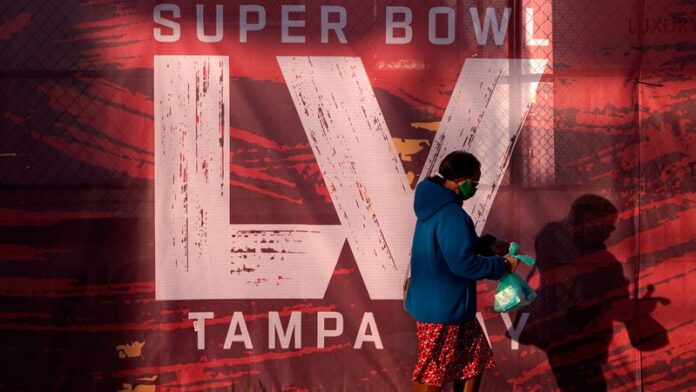[ad_1]
Editor’s note: Find the latest COVID-19 news and guidance in Medscape’s Coronavirus Resource Center.
As Tom Brady of the Tampa Bay Buccaneers gets ready for his tenth Super Bowl against Patrick Mahomes and the defending champions, the Kansas City Chiefs, experts tracking the COVID-19 pandemic are worried that people at the stadium and at home will get sick if they don’t put their own best defensive play forward.
After almost every major holiday in 2020 — Memorial Day, Independence Day, Labor Day, Thanksgiving, Christmas, and New Years — the United States had an increase in COVID-19 cases.
This Sunday, Raymond James Stadium in Tampa, Florida — a venue that normally seats 65,890 fans and can expand to 75,000 — will be filled to about one-third capacity. The National Football League has announced the sale of 14,500 tickets; in addition, approximately 7500 vaccinated healthcare workers will attend as guests.
The Weeknd will headline the halftime show and measures will be taken to ensure the safety of on-site attendees. However, it is the off-site celebrations that are a concern to many health professionals.
“I’m not so much worried about the 22,000 fans in attendance, some of whom will be vaccinated healthcare workers,” Cedric Dark, MD, from the Baylor College of Medicine in Houston, told Medscape Medical News. “I’m more concerned about the indoor parties happening all over the country.”
Football is the favorite sport of 62% of Americans, according to a recent Gallop poll. Friends and families typically gather before and after the game, around the TV, with food and alcohol in what some consider an unofficial national holiday.
Home of the Super Bowl Already Home to COVID-19 Variants
Florida has already emerged as the state leader in COVID-19 variants, according to a February 4 report from the Centers for Disease Control (CDC) and Prevention, outpacing areas like California, which also has more variants than average.
“We know that the Florida Department of Health did genome sequencing of about 500 patients in January with the virus, and about 90 showed up with the Brazilian variant,” epidemiologist Marco Salemi, PhD, from the Emerging Pathogens Institute at the University of Florida in Gainesville, told Medscape Medical News. “Back in December, when they sequenced 500, they didn’t find any variants. We went from zero variants to 20% in 1 month.”
And just because some of the attendees at the Super Bowl are vaccinated, it doesn’t mean they are not infected, he pointed out. “They can still pass the virus on to others.”
The variants are of grave concern. “Even though we are beginning to vaccinate, the virus is continually mutating. And the more it mutates, the more it may become vaccine resistant,” Salemi explained.
We went from zero variants to 20% in 1 month.
Multiple variants of the virus that causes COVID-19 have already been documented in the United States, including variants originally detected in Brazil, South Africa, and the United Kingdom, according to CDC spokesperson Joel London.
These variants seem to spread more easily and quickly than other variants, which could lead to more cases of COVID-19, he warned. “An increase in the number of cases will put more strain on healthcare resources, lead to more hospitalizations, and potentially more deaths.”
Although National Football League organizers say that in-stadium fans will be required to wear masks, stadium time is only one aspect of the overall risk. “It’s the gathering before and after, it’s standing in lineups. We live in a state where policy for social distancing and masks has not been implemented,” Salemi said.
Outside the stadium, the game will go on — likely without masks. “Will people wear masks while gathered in front of the TV?” Salemi said he’s hopeful but is not convinced they will.
So far, the American population has shown a lack of enthusiasm toward changing behavior to protect others from getting sick, and that won’t likely change for game day. “I have been given the vaccine, but I still wear masks and social distance. I don’t want to risk infecting other people.”
People who are not normally careful about taking COVID-19 precautions likely won’t be more cautious just because it’s Super Bowl day. “And some others may be even more relaxed for this event,” Salemi said.
Individual behaviors are the fuel that keep the pandemic burning. “If we want this to end sooner rather than later, we have to put in the work,” said Dark. He added that he hopes any Super Bowl parties will include only the people in that household’s bubble. And if not, “they should be outdoors and people should wear masks.”
For more news, follow Medscape on Facebook, Twitter, Instagram, and YouTube
[ad_2]
Source link












